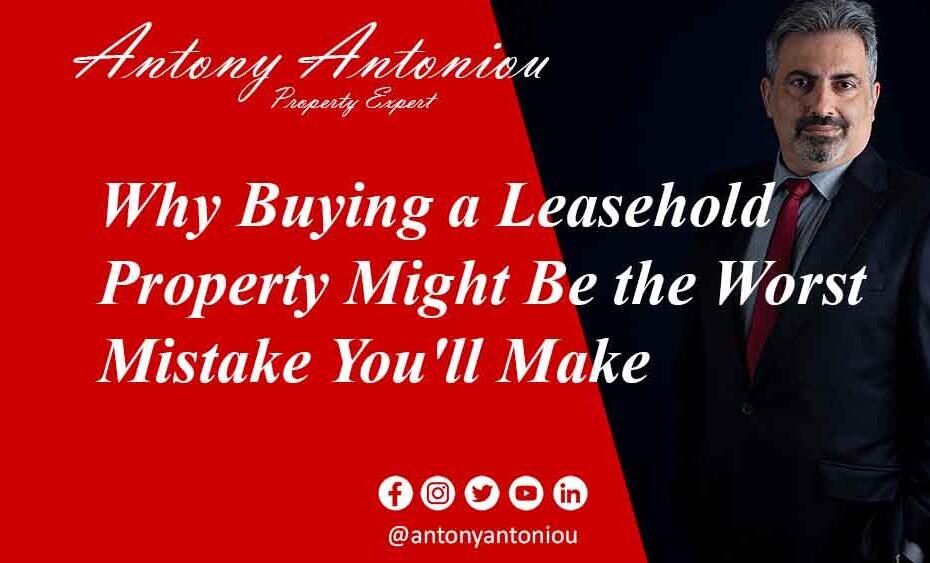Why Buying a Leasehold Property Might Be the Worst Mistake You’ll Make
Introduction
Finding your dream home is a significant life milestone, but for some leasehold property owners, what should be a dream turns into a nightmare. Leasehold properties, which are prevalent when purchasing flats, can lead to eye-watering expenses and limited independence. While they are often chosen by first-time buyers as a way to enter the housing market, the hidden pitfalls of leasehold agreements can be financially crippling. In this blog post, we will delve into the world of leasehold properties, exploring how they work, what to be cautious of when considering a leasehold purchase, and what changes may be on the horizon.
Isn’t there talk of government reform?
Leasehold properties have come under intense scrutiny due to issues such as exorbitant service charges, escalating ground rents, and unexpected cladding costs that hinder homeowners from selling or remortgaging their properties. Despite calls for reform, the plans to abolish the “feudal” leasehold system have been watered down, as comprehensive changes cannot be implemented before the next election. This leaves many homeowners in a state of uncertainty about the future of leasehold properties. While the government has taken some steps to address these issues, it remains a complex problem that needs further attention.
Why Does Leasehold Get a Bad Rap?
Leasehold properties often come with a slew of issues that make them less attractive to prospective buyers. Some of the key reasons leasehold properties get a bad rap include:
1. Accelerating Ground Rent and Service Charges
Leasehold agreements frequently include ground rent terms that can double every ten years or so. This exponential increase leaves homeowners with soaring costs, making it difficult to sell or remortgage their properties. Additionally, service charges, which cover various expenses, can be subject to significant changes. In cases where substantial repairs are needed, leaseholders are responsible for covering the costs, regardless of whether they use the services provided. This lack of control over rising service charges and ground rent can lead to financial turmoil.
2. Riddled with Restrictions
Another challenge associated with leasehold properties is the presence of numerous restrictions. While some restrictions may be standard, such as limitations on subletting or pet ownership, others are more unusual. Some lease agreements prohibit the use of washing machines or tumble dryers, or require homeowners to pay for terrorism insurance, even in peaceful areas. These restrictions can affect daily life and potentially lead to the loss of the lease if violated.
3. Changes Are Not Permitted
Leasehold properties impose significant restrictions on homeowners’ ability to make changes to their homes. Any substantial changes require permission from the freeholder, and even cosmetic alterations may be subject to approval and fees. This lack of autonomy can be frustrating and may limit homeowners’ ability to personalize their living spaces.
4. Issues with a Short Lease
Leasehold properties are not permanent. Homeowners own the property for the duration specified in the lease, which can be hundreds of years long. Once the lease expires, ownership reverts to the freeholder, and extending the lease involves additional costs. A shorter lease can complicate the selling process and limit the property’s appreciation in value.
The Upsides of Leasehold
Despite the challenges, leasehold properties do have some advantages that make them appealing to certain homebuyers. These benefits include:
1. Affordability
Leasehold properties are often more affordable than freehold properties, making them a viable option for those looking to enter the housing market, particularly in major cities. They provide an opportunity for first-time buyers to take their first steps on the property ladder.
2. Maintenance Responsibility
As a leaseholder, you are not responsible for the maintenance of the building or communal areas. This can provide peace of mind, especially in situations where costly issues like cladding problems arise.
Go in with Your Eyes Open
If you are considering purchasing a leasehold property, it’s crucial to thoroughly understand the terms and conditions of the agreement. Here are some key considerations:
1. Lease Length
Avoid properties with less than 100 years left on the lease, and consider extending the lease before reaching this point. A shorter lease can complicate future sales and increase costs.
2. Fees and Charges
Be aware of the fees associated with the property, such as ground rent and service charges. Determine whether these costs can increase over time and under what circumstances.
3. Contractual Clauses
Read the lease agreement thoroughly and ensure you are comfortable with all the clauses and restrictions it contains. If there are clauses that make you uneasy, be prepared to walk away from the property.
Conclusion
Leasehold properties can be a double-edged sword, offering affordability and relief from maintenance responsibilities but also subjecting homeowners to escalating costs, restrictions, and potential financial pitfalls. While government reform efforts are ongoing, it’s essential for potential buyers to approach leasehold properties with caution. By understanding the terms and seeking legal advice when necessary, you can make an informed decision that avoids the potential financial burdens associated with leasehold agreements. In the end, going into a leasehold property purchase with your eyes open is the best way to ensure you don’t make a decision you’ll regret.

